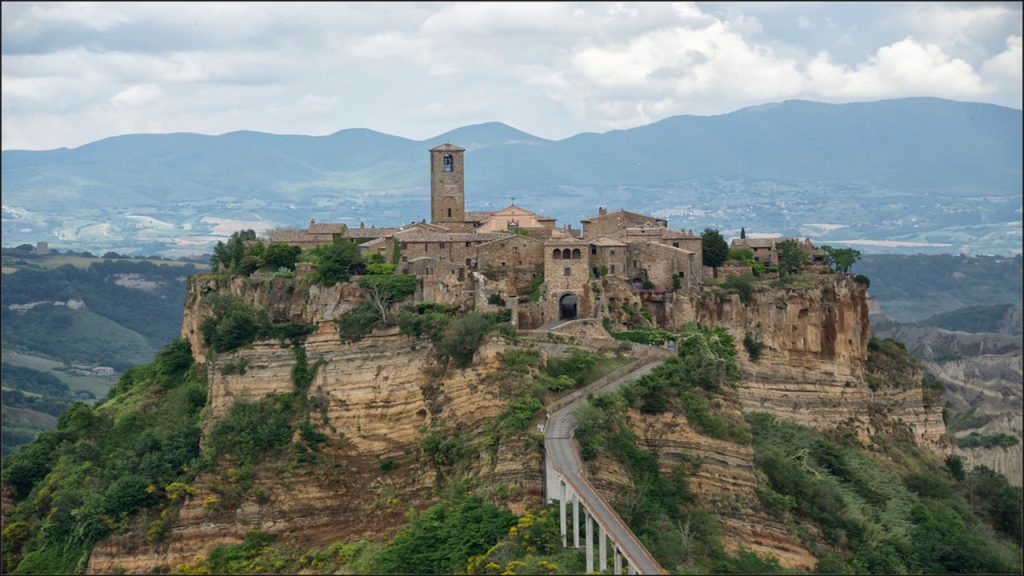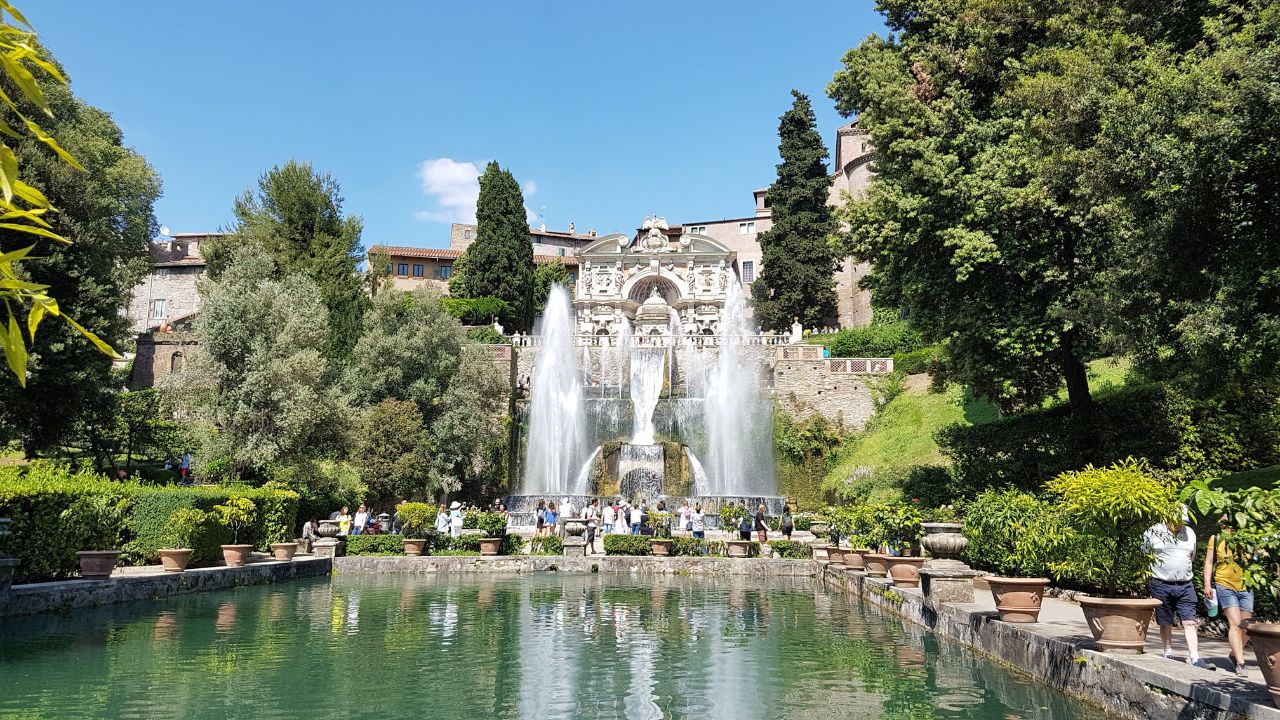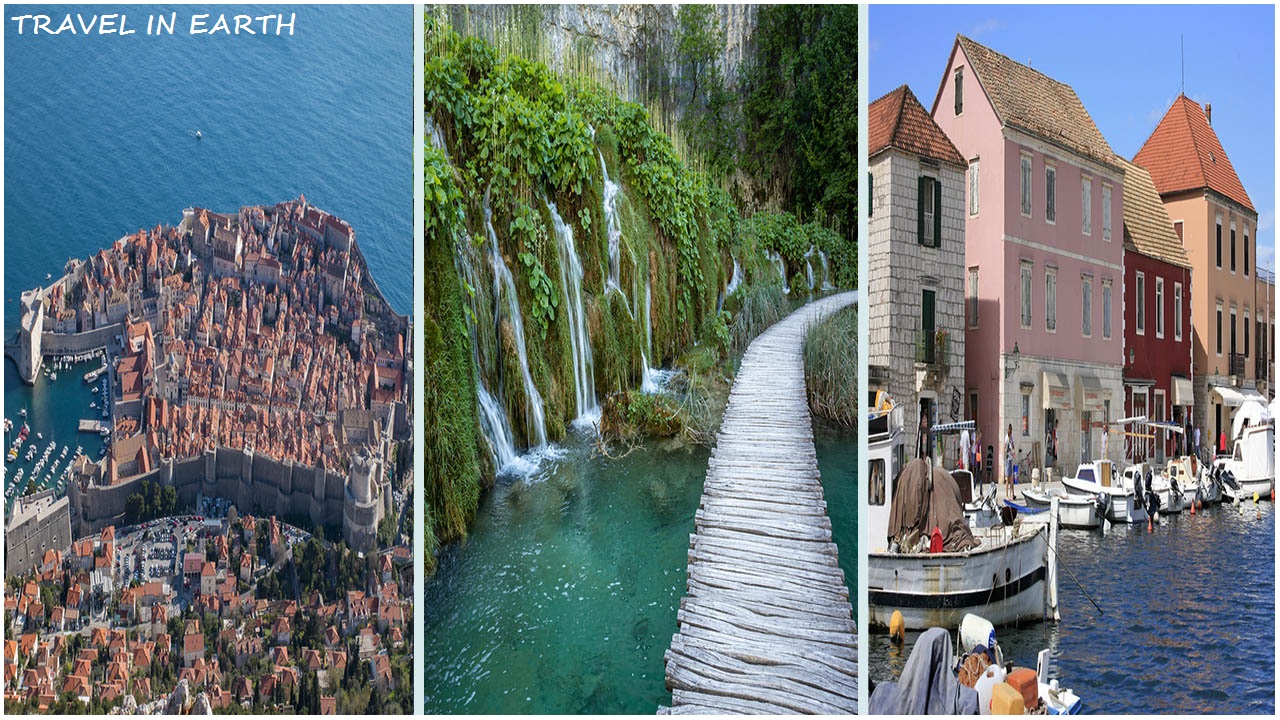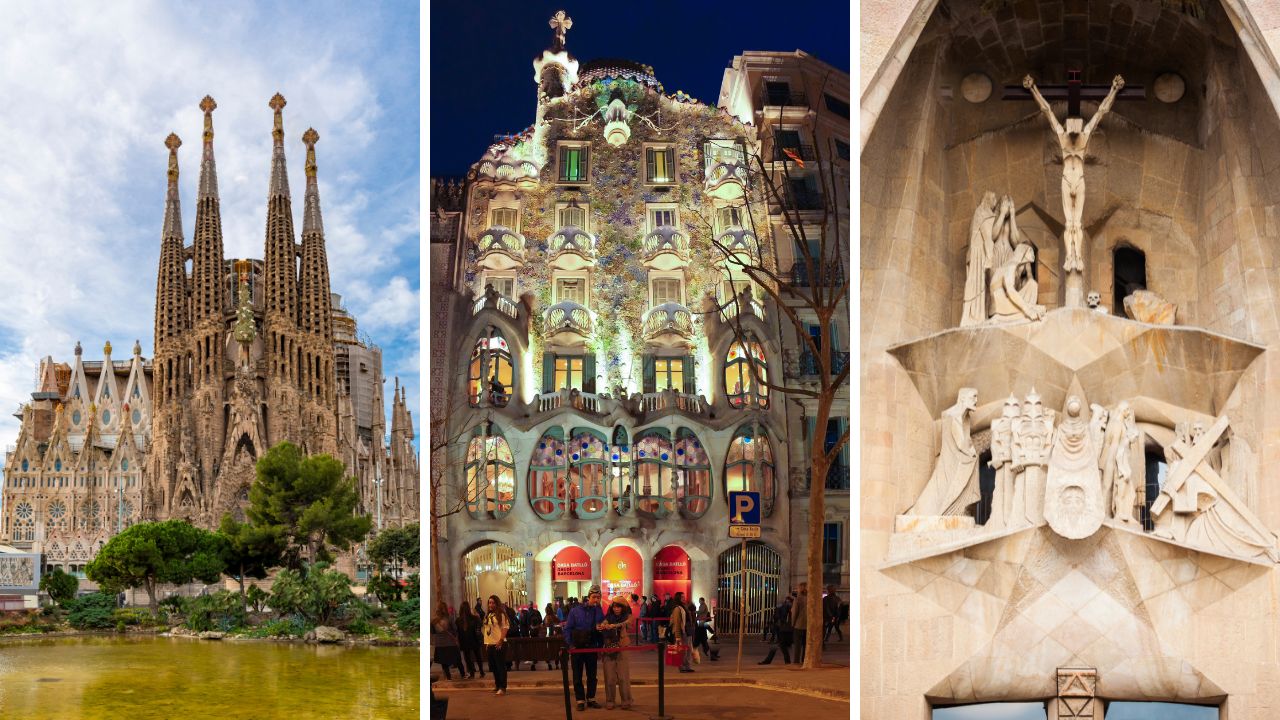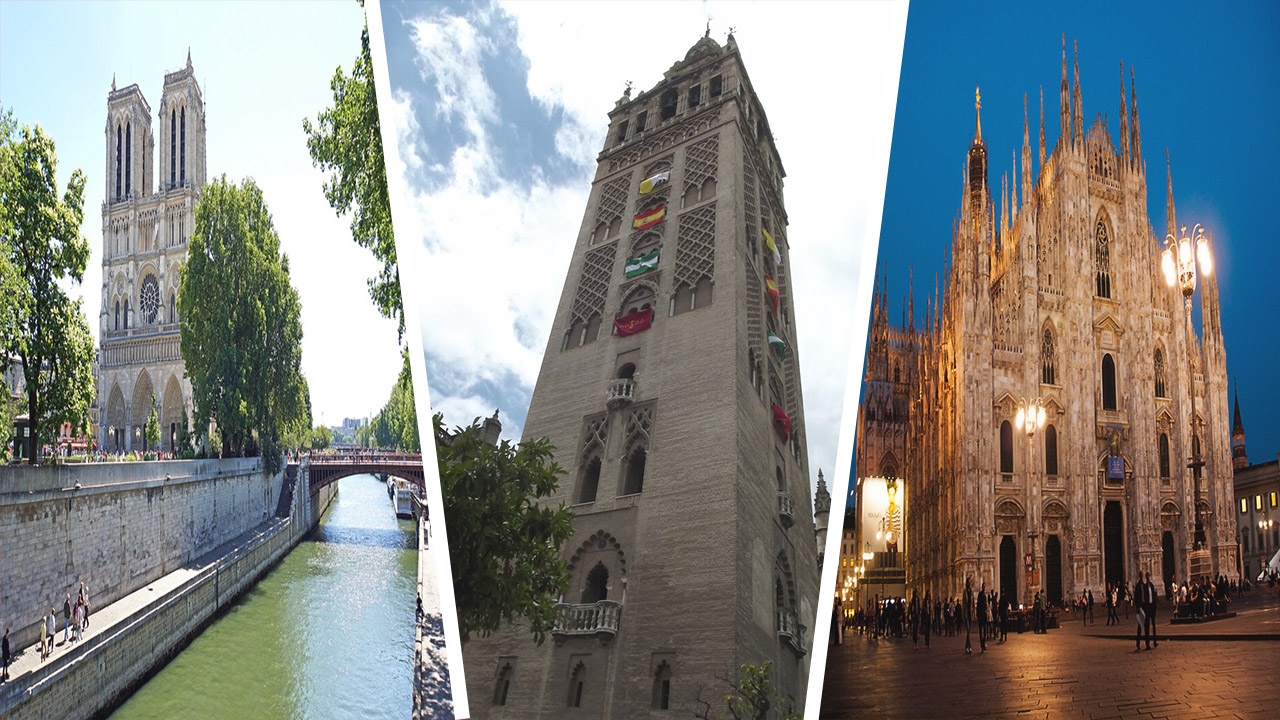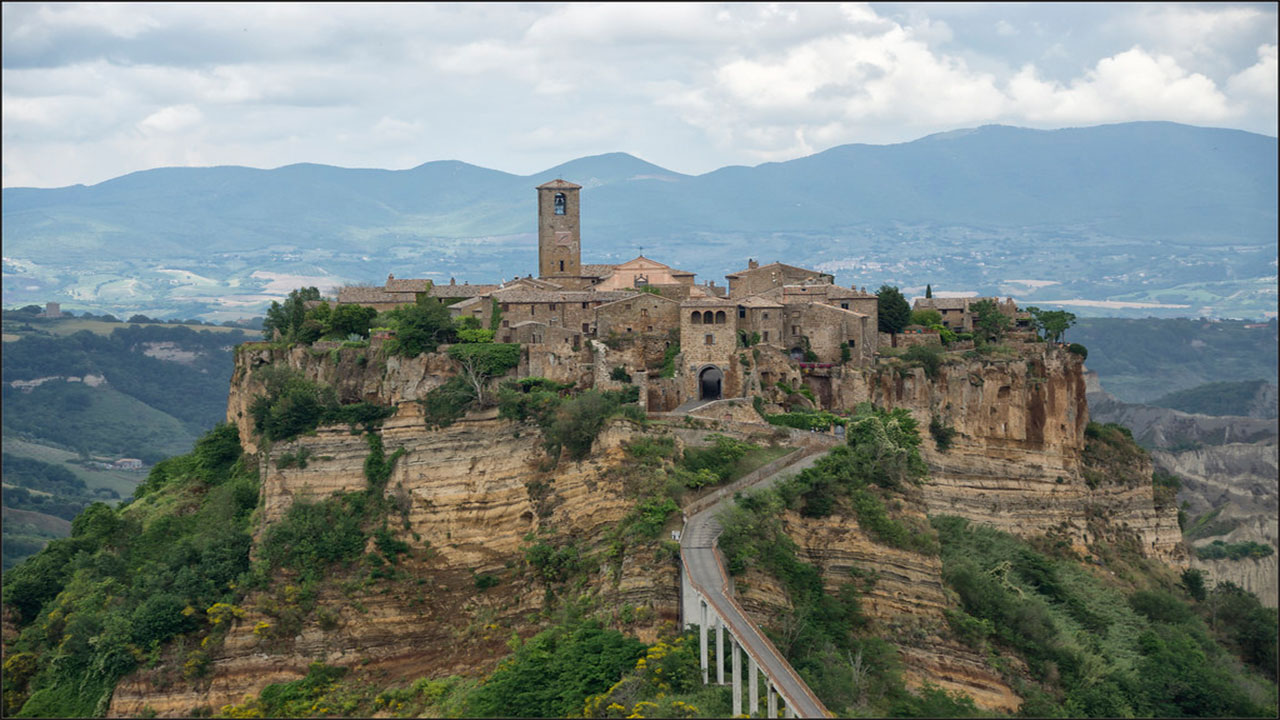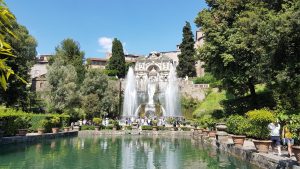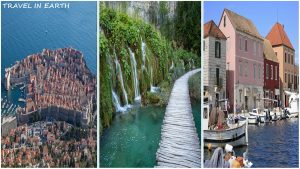Perched atop a crumbling hill in the heart of Italy lies a town that appears frozen in time yet is slowly fading away. Civita di Bagnoregio, often referred to as “The Dying City in Italy” or “Il Paese che Muore” in Italian, is a place where history, geology, and human perseverance collide in a dramatic struggle against the forces of nature. This ancient Etruscan settlement, located in the province of Viterbo in central Italy, has captured the imagination of travelers and preservationists alike with its precarious position and breathtaking beauty.
As the nickname suggests, Civita di Bagnoregio faces an uncertain future. The town clings to life on a plateau of volcanic tuff, surrounded by steep cliffs that are slowly eroding away. This geological instability, combined with centuries of earthquakes and landslides, has led to a steady decline in population and the constant threat of the town’s complete disappearance. Yet, despite these challenges, Civita di Bagnoregio remains a testament to human resilience and the enduring power of cultural heritage.
In this article, we will explore the fascinating history of Civita di Bagnoregio, the geological challenges it faces, and the ongoing efforts to preserve this unique piece of Italian history. We’ll delve into the daily lives of its few remaining residents, examine the impact of tourism on the dying city, and consider what the future may hold for this remarkable place teetering on the edge of extinction.
History of Civita di Bagnoregio
The story of Civita di Bagnoregio begins long before recorded history, in the mists of Italy’s ancient past. The Etruscans, a sophisticated civilization that flourished in central Italy from around 900 BCE to 90 BCE, are the origins of the town. The Etruscans were known for their advanced engineering skills and ability to build settlements in challenging locations, a trait clearly evident in the founding of Civita.
The Etruscans chose this site for its defensive position, perched high above the surrounding valleys. Subsequent inhabitants would later expand the network of caves and tunnels they carved into the soft volcanic tuff. These early settlers laid the foundation for what would become a thriving medieval town.
As the Roman Empire rose to power, Civita, like many Etruscan settlements, came under Roman control. The town continued to grow and prosper during this period, benefiting from its strategic location along important trade routes. The Romans further developed the infrastructure of the town, improving roads and expanding the underground network of tunnels.
The fall of the Roman Empire brought new challenges and opportunities to Civita. During the turbulent years of the Early Middle Ages, the town’s naturally defensible position made it an attractive refuge for those seeking safety from invading forces. It was during this time that Civita began to take on the medieval character that still defines much of its architecture today.
The Middle Ages saw Civita reach the height of its prosperity and influence. During this period, the town became an important center of religious and civic life, with numerous churches and public buildings constructed. The most notable of these is the Romanesque Church of San Donato, built in the 7th century and later renovated in the 16th century. This church, with its blend of architectural styles, stands as a testament to the town’s long and varied history.
Civita’s fortunes began to change in the late Renaissance period. A series of earthquakes in the 17th century caused significant damage to the town and initiated the slow process of erosion that continues to threaten its existence today. The most devastating of these earthquakes occurred in 1695, causing widespread destruction and marking the beginning of Civita’s long decline.
Despite these setbacks, life in Civita continued. The town adapted to its new reality, with residents rebuilding and reinforcing structures to withstand the unstable terrain. However, the ongoing threat of landslides and access difficulties began to take their toll on the population. Many residents chose to relocate to the more stable neighboring town of Bagnoregio, leading to a gradual but steady decline in Civita’s population.
The 20th century brought new challenges to Civita di Bagnoregio. The advent of industrialization and urbanization led to further population decline as young people left the isolated town in search of better economic opportunities in larger cities. By the mid-20th century, Civita was in danger of becoming a ghost town, with only a handful of residents remaining to maintain its crumbling structures and keep its traditions alive.
However, the latter half of the 20th century also saw a growing appreciation for Civita’s unique history and precarious beauty. As awareness of the town’s plight spread, efforts to preserve and protect this remarkable place began to take shape. Today, Civita di Bagnoregio stands at a crossroads, balancing the needs of preservation with the realities of modern life and the growing impact of tourism.
Geological Challenges
The very foundation of Civita di Bagnoregio’s existence is also its greatest threat. The town sits atop a plateau of volcanic tuff, a type of rock formed from the ash and debris of ancient volcanic eruptions. While this material provided early settlers with an easily workable medium for carving out dwellings and tunnels, it also presents significant challenges in terms of long-term stability.
Steep cliffs, composed of layers of tuff and clay, surround the plateau on which Civita stands. This geological composition makes the area highly susceptible to erosion. Over time, the softer clay layers erode more quickly than the tuff, leading to the undercutting of the cliffs. As the clay washes away, large chunks of the overlying material lose their support and break off, causing landslides and further destabilizing the town’s foundations.
This process of erosion is exacerbated by several factors:
- Rainfall: The region experiences significant rainfall, particularly in autumn and spring. As water seeps into the porous tuff and clay, it weakens the structure of the rock and accelerates erosion.
- Strong winds, which are common in this elevated area, contribute to the weathering of the exposed rock faces.
- The area around Civita di Bagnoregio is seismically active. Earthquakes, even minor ones, can trigger landslides and cause fractures in the rock, making it more vulnerable to erosion.
- Human activity: Centuries of habitation have left their mark on the landscape. The excavation of caves and tunnels, while providing valuable living space, has also weakened the structural integrity of the plateau in some areas.
The ongoing erosion poses a number of immediate threats to Civita:
- Loss of land: As the cliffs recede, the town literally shrinks. Buildings on the plateau’s edge are constantly at risk of collapsing.
- Instability: The erosion undermines the foundations of buildings throughout the town, leading to structural problems and the need for constant maintenance and reinforcement.
- Access problems: The only connection between Civita and the outside world is a narrow pedestrian bridge. Erosion threatens this crucial lifeline, potentially isolating the town completely.
For decades, geologists and engineers have studied Civita di Bagnoregio, trying to understand the complex interplay of factors contributing to its decline. Their work has been crucial in developing strategies to slow the erosion and stabilize the town’s foundations. However, the challenges posed by the town’s unique geology remain formidable, requiring ongoing vigilance and intervention to preserve this remarkable place for future generations.
Population Decline
The geological instability of Civita di Bagnoregio has had a profound impact on its population. Once a thriving medieval town, Civita has seen a dramatic decrease in permanent residents over the centuries. Several factors have contributed to this decline.
- Safety concerns: The constant threat of landslides and building collapses has made many residents wary of continuing to live in Civita. Major earthquakes and landslides throughout history have triggered waves of migration.
- Lack of modern amenities: The town’s isolated position and crumbling infrastructure make it difficult to provide the conveniences of modern life. Issues with water supply, electricity, and internet connectivity have driven many, especially younger residents, to seek homes elsewhere.
- Economic factors: As the population dwindled, so did the economic opportunities in Civita. The lack of jobs and the difficulty of commuting to work in other towns have forced many to relocate.
- Accessibility: The only access to Civita is via a long, steep pedestrian bridge. This makes it difficult for the elderly or those with mobility issues to live in town and complicates everyday tasks like grocery shopping or accessing healthcare.
Historical data illustrates the population decline of Civita di Bagnoregio.
| Year | Approximate Population |
|---|---|
| 1800 | 3,000 |
| 1900 | 600 |
| 1950 | 200 |
| 2000 | 12 |
| 2020 | 11 |
As of 2023, the number of permanent residents in Civita di Bagnoregio has dwindled to single digits, with some sources reporting as few as 6–7 year-round inhabitants. This dramatic depopulation has earned Civita its sobriquet, “The Dying City.”
However, it’s important to note that while the number of permanent residents has declined, Civita experiences a significant influx of temporary residents and tourists, especially during the summer months. Some families who have moved away still maintain second homes in the town, returning for holidays and special occasions. Additionally, the town has converted a number of buildings into vacation rentals and bed and breakfasts, allowing visitors to immerse themselves in this unique setting.
The population decline presents both challenges and opportunities for Civita di Bagnoregio. On one hand, the lack of permanent residents makes it difficult to maintain traditional ways of life and preserve the town’s cultural heritage. On the other hand, the town’s near-abandonment has helped preserve its medieval character, making it an attractive destination for tourists and history enthusiasts.
Efforts to preserve the city
Recognizing the unique historical and cultural value of Civita di Bagnoregio, various stakeholders have undertaken significant efforts to preserve the town and slow its decline. These preservation efforts operate on multiple fronts:
- Structural reinforcement: Engineers and geologists have implemented various techniques to stabilize the cliffs and buildings of Civita. These include:
- Installing deep pilings to anchor unstable sections of the plateau.
- Reinforcing building foundations with steel rods.
- Applying shotcrete (sprayed concrete) to vulnerable cliff faces to reduce erosion.
- Drainage improvements: Better management of rainwater and runoff has been critical to reducing erosion. We have installed new drainage systems to divert water away from vulnerable areas.
- Many of Civita’s historic buildings have undergone careful restoration to preserve their structural integrity while maintaining their original character. This work often involves traditional building techniques combined with modern materials and methods.
- We have reinforced and improved the pedestrian bridge connecting Civita to Bagnoregio several times to ensure safe access to the town. Plans announced in 2023 call for the construction of a new, more accessible bridge alongside the existing one.
- Legal protections: The Italian government has designated Civita di Bagnoregio as a protected historical site, providing certain legal safeguards and making it eligible for preservation funding.
- There have been ongoing efforts to have Civita di Bagnoregio recognised as a UNESCO World Heritage site. Although we have not yet achieved this designation, the application process has contributed to increasing awareness about the town’s plight and the importance of its preservation.
- Sustainable tourism initiatives: Recognizing that tourism is both an opportunity and a potential threat, local authorities have implemented measures to promote sustainable tourism. These include limiting the number of daily visitors, promoting off-season visits, and educating tourists about the fragile nature of the site.
- Research and monitoring: Ongoing scientific studies continue to monitor the geological stability of Civita and its surroundings. This research informs preservation strategies and helps predict potential future challenges.
- Cultural preservation: Civita’s residents are actively documenting and preserving their traditions, stories, and way of life. This includes oral history projects, traditional craft workshops, and cultural events that celebrate the town’s heritage.
- Fundraising and awareness campaigns: Various organizations, both local and international, work to raise funds and awareness for the preservation of Civita di Bagnoregio. These efforts have included crowdfunding campaigns, benefit concerts, and international media coverage.
The preservation of Civita di Bagnoregio is an ongoing process that requires constant vigilance and adaptation. Despite significant efforts to stabilize the town and slow its decline, the fundamental geological challenges persist. The efforts to save the “Dying City” serve as a powerful example of the challenges and importance of preserving cultural heritage in the face of natural forces.
In the next section, we will explore how tourism has impacted Civita di Bagnoregio and examine its growing cultural significance in Italy and beyond.
Tourism and cultural significance
In recent years, Civita di Bagnoregio has experienced a remarkable transformation from a nearly abandoned village to a popular tourist destination. The town’s unique history, stunning vistas, and precarious position have captured the imagination of travelers from around the world. This surge in tourism has had a profound impact on the town and its few remaining residents.
The Rise of Tourism
Several factors contribute to the growth of tourism in Civita di Bagnoregio.
- Media exposure: Increased coverage in travel magazines, documentaries, and social media has brought global attention to the “Dying City.”
- Improved accessibility: While still challenging to reach, improvements to the pedestrian bridge and nearby infrastructure have made visits more manageable.
- Cultural trends: A growing interest in “off the beaten path” destinations and authentic experiences has drawn visitors to this unique location.
- Marketing efforts: Local and regional tourism boards have promoted Civita as a must-see destination in central Italy.
Tourism statistics reflect this dramatic increase in popularity:
| Year | Approximate Annual Visitors |
|---|---|
| 2010 | 40,000 |
| 2015 | 500,000 |
| 2019 | 1,000,000 |
| 2022 | 850,000 (post-COVID recovery) |
Tourism’s impact
The influx of tourists has had both positive and negative effects on Civita di Bagnoregio.
Positive impacts:
- Economic boost: Tourism has brought much-needed revenue to the area, funding preservation efforts and providing income for local businesses.
- Increased awareness: Greater visibility has led to more support for conservation efforts and cultural preservation.
- Job creation: In the region, tourism-related jobs have provided employment opportunities.
Negative impacts:
- Overcrowding: During peak seasons, the tiny town can become overwhelmed with visitors, straining its limited infrastructure.
- Environmental stress: Increased foot traffic contributes to erosion and wear on the fragile landscape and historic structures.
- Loss of authenticity: There are concerns that the focus on tourism may lead to a “theme park” atmosphere, diminishing the town’s authentic character.
Cultural Significance
Beyond its draw as a tourist attraction, Civita di Bagnoregio holds significant cultural value:
- Architectural heritage: The town’s well-preserved medieval and Renaissance architecture provides insight into historical building techniques and urban planning.
- Etruscan legacy: The site offers a tangible link to the ancient Etruscan civilization, with ongoing archaeological studies revealing new information about this mysterious culture.
- Religious significance: Civita’s churches, particularly the Church of San Donato, are important examples of religious architecture and house valuable artworks.
- Despite the population decline, efforts are underway to preserve and showcase traditional Civita crafts, foods, and festivals.
- Inspiration for arts and literature: The dramatic setting and poignant story of Civita have inspired numerous artists, writers, and filmmakers.
- Symbol of resilience: In the face of natural adversity, Civita di Bagnoregio has become a powerful symbol of human perseverance.
The cultural significance of Civita di Bagnoregio extends beyond its physical boundaries. It serves as a reminder of the fragility of our historical heritage and the importance of preservation efforts. The town’s story raises important questions about sustainable tourism, cultural conservation, and the balance between progress and tradition.
Daily Life in the Dying City
Despite its nickname and dwindling population, Civita di Bagnoregio is far from a ghost town. The few permanent residents, along with seasonal inhabitants and local business owners, maintain a unique way of life that blends centuries-old traditions with the realities of the 21st century.
The Residents
As of 2023, Civita’s year-round population consists of just a handful of individuals, mostly elderly residents who have deep family ties to the town. These long-term inhabitants are the keepers of Civita’s history and traditions, playing a crucial role in maintaining the town’s authentic character.
In addition to the permanent residents, Civita has a fluctuating population of part-time inhabitants. These include:
- Families with ancestral homes in Civita often return for holidays and summer stays.
- The town’s unique atmosphere serves as inspiration for artists and writers.
- Entrepreneurs operate small hotels, restaurants, and shops that cater to tourists.
Daily Routines
The seasons and the ebb and flow of tourists determine the rhythm of life in Civita di Bagnoregio.
- Mornings: The day often begins early, with residents and business owners preparing for the arrival of day-trippers. This might involve baking fresh bread, opening shops, or performing maintenance tasks around the town.
- Tourist hours: From mid-morning to early evening, the town comes alive with visitors. You can find residents giving informal tours, selling local products, or simply observing the bustling activity from their doorsteps.
- Evenings: As day visitors depart, the town quiets down. This is often a time for community gatherings, with residents and overnight guests enjoying meals together or socializing in the main square.
- Off-season: During quieter months, life in Civita slows down considerably. Most restoration work and major maintenance projects take place during this time.
Challenges of Daily Life
Living in Civita di Bagnoregio presents unique challenges:
- Access: You must transport all goods across the pedestrian bridge. Many residents use small electric carts to move supplies, but larger items require special arrangements.
- Basic services such as healthcare and education are not available within Civita itself. Residents must travel to nearby towns for these necessities.
- Weather: The town’s exposed position makes it vulnerable to strong winds and storms, which can sometimes temporarily cut off access.
- Privacy: During peak tourist season, residents must adapt to living in what sometimes feels like an open-air museum.
- Maintenance: The constant battle against erosion means that home maintenance is an ongoing concern for property owners.
Preserving Traditions
Despite these challenges, Civita’s residents work hard to maintain local traditions.
- Religious festivals: People continue to observe events like the Good Friday procession with great devotion.
- Culinary traditions: Traditional methods still produce local specialties like wild boar sausages and olive oil.
- Crafts: Some residents keep alive traditional crafts like woodworking and ceramics.
- Oral history: We make an effort to document and transmit the tales and recollections of senior citizens.
The daily life in Civita di Bagnoregio is a delicate balance between preserving the past and adapting to the present. The resilience and dedication of its few inhabitants play a crucial role in keeping the “Dying City” very much alive.
Future Prospects
As Civita di Bagnoregio faces the challenges of the 21st century, its future remains uncertain, yet hopeful. A complex interplay of environmental, economic, and cultural factors shapes the town’s prospects.
Environmental Outlook
The geological instability that has long threatened Civita continues to be its most pressing concern.
- Climate change: Increasing frequency of extreme weather events could accelerate erosion and pose new threats to the town’s stability.
- Technological advancements: Ongoing research into erosion control and structural reinforcement may yield new solutions for stabilizing the town.
- Monitoring systems: Implementation of advanced monitoring technologies could provide early warnings of potential landslides or structural failures.
Economic Future
Tourism has a significant impact on Civita di Bagnoregio’s economic prospects.
- Sustainable tourism: There’s a growing focus on developing sustainable tourism models that balance economic benefits with preservation needs.
- Diversification: To encourage longer stays and off-season visits, Civita is promoting itself as more than just a day-trip destination.
- Digital economy: Improved internet connectivity could allow for new economic opportunities, potentially attracting digital nomads and remote workers.
Cultural Preservation
Civita’s future as a living community and cultural site is a key concern.
- UNESCO World Heritage status: Achieving this designation could bring additional resources and protection, but also increased tourism pressures.
- Educational initiatives: Programs to teach traditional crafts and customs to younger generations could help preserve Civita’s intangible heritage.
- Virtual preservation: Digital mapping and virtual reality technologies offer new ways to document and experience Civita’s heritage, ensuring it lives on even if physical preservation becomes impossible.
Potential Scenarios
We can envision several scenarios for the future of Civita di Bagnoregio:
- Managed decline: Accepting the inevitability of erosion, focus shifts to documenting and preserving as much as possible while managing a gradual retreat from the most vulnerable areas.
- Technological intervention: Major engineering projects stabilize the town, potentially allowing for repopulation and expanded development.
- Living museum: Civita transitions fully into a carefully managed historical site, with a limited resident population but enhanced facilities for research and tourism.
- Eco-cultural haven: The town becomes a model for sustainable living and cultural preservation, attracting a new generation of residents committed to its unique way of life.
Ongoing Debates
The future of Civita di Bagnoregio is the subject of ongoing debate among preservationists, geologists, economists, and residents. Key questions include:
- How much intervention is appropriate in preserving a site like Civita?
- Is it possible to strike a balance between preservation and development?
- What role should tourism play in the town’s future?
- If we cannot maintain the town’s physical structure indefinitely, how can we preserve its cultural heritage?
These questions reflect broader debates about heritage preservation, sustainable development, and the value we place on historical sites in the modern world.
Conclusion
Civita di Bagnoregio, the “Dying City,” stands as a powerful testament to the enduring human spirit and the complex relationship between people and their environment. For over two millennia, this remarkable town has clung to its precarious perch, weathering natural disasters, population decline, and the relentless forces of erosion.
Civita is currently facing significant challenges. The very features that make it unique—its isolated location, fragile geology, and preserved medieval character—also present its greatest challenges. The influx of tourism has brought new life and resources to the town but also raises questions about sustainable preservation and authentic cultural experiences.
The story of Civita di Bagnoregio is far from over. It continues to evolve, shaped by the dedicated efforts of its remaining residents, the interests of visitors from around the world, and the ongoing work of preservationists and scientists. The town serves as a living laboratory for issues of historical preservation, sustainable tourism, and community resilience.
As we look to the future, Civita di Bagnoregio reminds us of the value of our cultural heritage and the importance of finding innovative solutions to preserve it. Whether the town ultimately succumbs to the forces of nature or manages to endure for centuries to come, its legacy as a unique window into history and a symbol of human perseverance remains assured.
The “Dying City” reminds us that despite seemingly insurmountable challenges, we should celebrate and preserve beauty, culture, and life. It stands as a call to action for current and future generations to cherish and protect the irreplaceable treasures of our shared human heritage.

